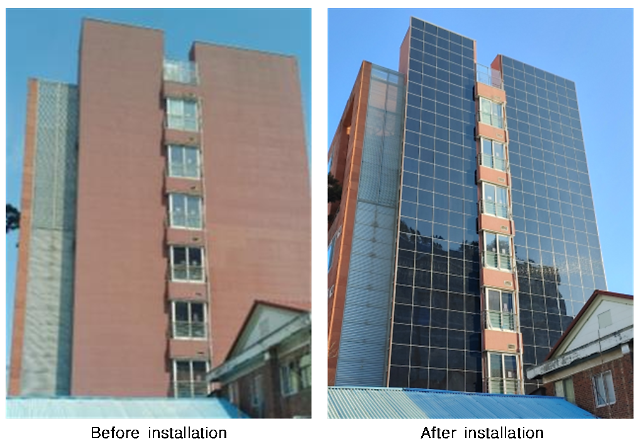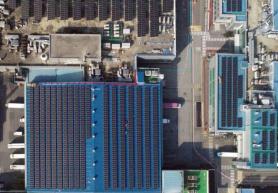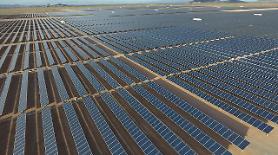
[Courtesy of Seoul City]
BIPVs can be formed in various ways including semi-transparent window glasses with built-in solar panels and photovoltaic harvesters designed to be installed onto walls and rooftops. It is not easy for people to tell if a solar energy harvesting system is installed in a building. Since 2014, Seoul City had been offering subsidies for people who wish to install a 325-watt-class solar panel onto their balconies. However, the green project was scrapped in 2022 after Mayor Oh Se-hoon from the ruling People's Power Party was elected.
Through a one billion won ($768,994) project, Seoul would provide up to 80 percent of installation costs for selected candidates in 2023. The capital city said subsidies would be offered to those with private buildings or prospective owners in Seoul. The candidates are required to install solar power facilities within this year. By installing a 100 kilowatt-class integrated solar power facility, about 80 megawatt hours of electricity can be produced every year, which can power up to 50 households.
The municipal authorities did not provide solutions regarding how to clean solar panels. "Realistically, it is challenging to clean such small facilities on a regular basis," Seoul's green energy bureau official Lee Won-jun told Aju Daily on April 14. Lee added that he would regularly clean solar panels if he had large-scale facilities.
In South Korea, many urban green energy harvesting methods have been tested such as urban wind farms and micro hydropower generators built on city creeks. However, such green energy harvesting systems generate loud noise. BIPV is regarded as one of the most ideal energy harvesting tools as it does not take up space or create noise.
Copyright ⓒ Aju Press All rights reserved.




